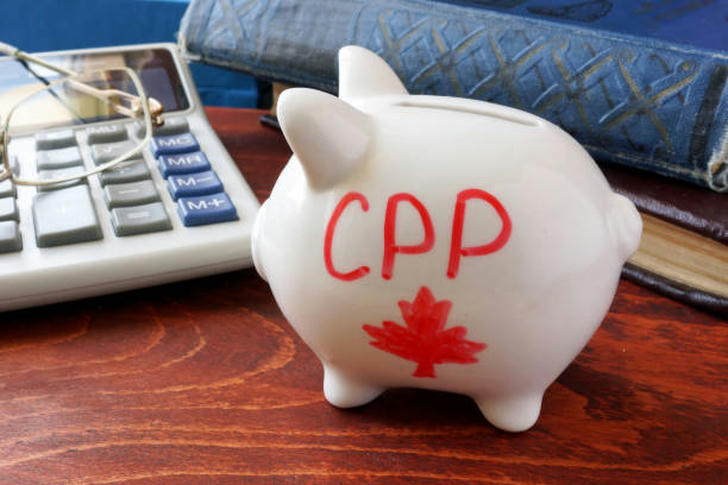Maximizing Your Canadian Pension Plan: Tips for a Secure Retirement
This article provides actionable strategies to help you maximize your Canadian Pension Plan (CPP) benefits and achieve a secure retirement.

What is Canadian Pension Plan
The Canada Pension Plan (CPP) is a government-administered program that provides income replacement to eligible Canadians during retirement. It also offers financial support in cases of disability or death, including survivor and children’s benefits. CPP is funded through contributions from employees, employers, and self-employed individuals, and the benefits are based on the amount and duration of contributions made during one's working life.
To qualify for CPP, you must have made at least one valid contribution, and the amount you receive depends on your contribution history and the age at which you choose to start receiving payments.
How to Maximize Your Canadian Pension Plan
1. Start Contributing Early and Consistently
One of the most effective ways to maximize your CPP benefit is to start contributing as early as possible and to do so consistently. Your CPP benefit is directly tied to how much you contribute throughout your working life. The more years you work and contribute, the higher your pension will be.
Take Sarah, for example. Sarah started her career in her early 20s and made regular contributions to the CPP right from the start. By the time she reached 40, she was making the maximum contributions, and when she retired at 65, Sarah was able to collect her full CPP benefits. This allowed her to live comfortably without having to rely too heavily on her personal savings.
2. Consider Delaying Your CPP Payments
While the standard age to start receiving your CPP is 65, it can be worth your while to wait until 70. For each year you delay receiving your payments, your CPP increases by 8.4%. While this may seem like a long wait, it can make a significant difference in your monthly income.
Take John’s experience. John chose to delay his CPP until age 70. By the time he turned 72, he was receiving a pension that was significantly larger than if he had started at 65. In fact, waiting until 70 increased his monthly CPP payments by over $500, giving him a comfortable financial cushion to avoid dipping into other savings.
3. Regularly Review Your CPP Statements
It’s important to regularly check your CPP statements from the Canada Revenue Agency (CRA). These annual statements outline your contributions, and errors can happen from time to time. By keeping track of your statements, you ensure that all your contributions are accounted for, and you’re not missing out on any benefits.
Additionally, the CRA provides an online CPP calculator that can help you estimate your potential benefits based on your current contributions. This tool can be incredibly helpful in visualizing your retirement plan and ensuring you're on the right track.
4. Take Advantage of Family Benefits
Did you know that the CPP offers additional benefits for families? If you’re married or have children, there are extra options available to help maximize your household’s CPP benefit. For example, if you’re supporting children, you may qualify for the CPP Children’s Benefit, which can be applied for children under 18, or up to age 25 if they’re in full-time studies. This benefit can be a valuable addition to your retirement income if you’re supporting dependents.

5. Use Supplementary Savings Plans
While the CPP lays the foundation for your retirement income, it’s important to supplement it with other savings options like RRSPs (Registered Retirement Savings Plans) and TFSAs (Tax-Free Savings Accounts). Both are excellent tools that can help you grow your savings and complement your CPP.
• RRSPs and CPP
An RRSP allows you to defer taxes on the contributions you make, reducing your taxable income for the year. By contributing to an RRSP, you’re not only saving for retirement but also lowering your current tax bill. This makes RRSPs an excellent way to build additional savings for your retirement years.
Here’s how RRSPs and CPP work together: your RRSP savings provide you with additional income during retirement, which is crucial because the average CPP benefit doesn’t always fully replace your pre-retirement income. Sarah, from earlier, could also contribute to an RRSP alongside her CPP contributions. The combination of both would give her a much more comfortable retirement income, allowing her to live well without worrying about running out of money.
• TFSAs and CPP
TFSAs, on the other hand, don’t offer the immediate tax break that RRSPs do. However, the major advantage of a TFSA is that all income earned within the account is tax-free, even when you withdraw it in retirement. This makes TFSAs an ideal complement to CPP, as they provide tax-free income.
For example, John, who delayed his CPP until 70, could also contribute to a TFSA. When he reaches retirement, he could withdraw funds from his TFSA tax-free, providing extra income without increasing his tax burden. This gives him flexibility and tax efficiency in managing his retirement funds.
• How CPP, RRSP, and TFSA Work Together
CPP, RRSPs, and TFSAs all serve different purposes, but when used together, they create a more robust and tax-efficient retirement strategy. For example, while CPP benefits are taxable, withdrawing from a TFSA can help you cover expenses without worrying about increasing your taxable income. Similarly, RRSP withdrawals can be carefully planned to maximize your retirement income while minimizing taxes, especially if your income is lower in retirement.
6. Review Your Retirement Strategy Regularly
The key to maximizing your CPP and supplementary savings is to review your retirement strategy regularly. At least once a year, assess how you’re doing and make adjustments as needed based on your financial situation. A financial advisor can also help you fine-tune your strategy, ensuring that you choose the right investment vehicles and optimize your retirement planning.
